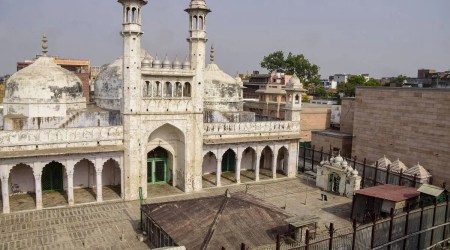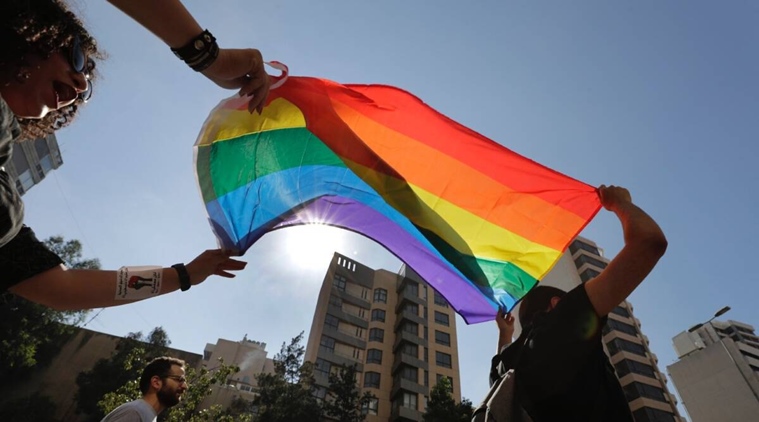Colourful flags, vibrant parades, several workshops, and awareness programmes mark the month of June every year as the LGBTQ community in the United States and other parts of the world come together to celebrate Pride Month, also known as Gay Pride.
It is observed in June to honour the 1969 Stonewall Uprising in Manhattan – a tipping point for Gay Liberation Movement in the US. The month seeks to celebrate the work done to achieve equal justice and opportunity for the community and recognise the impact they have had on history, at all levels.
🚨 Limited Time Offer | Express Premium with ad-lite for just Rs 2/ day 👉🏽 Click here to subscribe 🚨
What does LGTBQ stand for?
Best of Express Premium PremiumHow Pune police personnel reskilled themselves to tackle crypto crimes
PremiumHow Pune police personnel reskilled themselves to tackle crypto crimes PremiumExplained: The case for six airbags
PremiumExplained: The case for six airbags PremiumSri Lanka plans to develop Trincomalee port as industrial hub, stirs glob…
PremiumSri Lanka plans to develop Trincomalee port as industrial hub, stirs glob… PremiumLitigants turn to 80-year-old court ruling to press claims in Gyanvapi caseMore Premium Stories >>
PremiumLitigants turn to 80-year-old court ruling to press claims in Gyanvapi caseMore Premium Stories >>
LGBTQ is an acronym for lesbian, gay, bisexual, transgender and queer (an umbrella term for non-straight people). It is sometimes extended to LGBTIQ, to include intersex and asexual groups. These terms also include gender-fluid people, meaning those whose gender identity shifts over time or situation.
|Three content creators on the significance, meaning of Pride makeup
While the term ‘Gay Pride’ is believed to be coined by Thom Higgins, a gay rights activist in Minnesota, bisexual activist Brenda Howard is credited for popularising the word ‘Pride’ as she originated the idea for a week-long series of events around Pride Day.

 Colourful flags, vibrant parades, several workshops and awareness programmes mark the Pride Month (File)
Colourful flags, vibrant parades, several workshops and awareness programmes mark the Pride Month (File)
Also known as the ‘Mother of Pride, she had said, “The next time someone asks you why LGBT Pride marches exist or why [LGBT] Pride Month is June tell them ‘A bisexual woman named Brenda Howard thought it should be.’”
The 1969 Stonewall Uprising
In the wee hours of June 28, 1969, nine policemen raided the Stonewall Inn – a well-known gathering place for young gay men, lesbians and transgender people – in Greenwich village, Manhattan. The cops arrested the employees for selling alcohol without a license, and also anyone not wearing at least three articles of gender-appropriate clothing. At that time, homosexual acts were illegal in almost every US state.
While such raids on gay establishments had occurred prior to this event, the members of the LGBTQ community decided to resist arrest this time and threw bottles and coins at the officers, which soon broke into neighbourhood riots. This uprising became a catalyst for upcoming gay rights movements, launching a new era of resistance.
Speaking about the same, Mark Segal, one of the LGBTQ people outside Stonewall Inn that night, told ET, “We were enraged because, in a sense, 2,000 years of repression built up in us. And it was that night that we said to the police, ‘We are taking our street back. This is our neighbourhood. You are no longer going to control us. You’re no longer going to dominate us. We’re going to create our identity. We’re going to create a community where you wouldn’t allow us to have community.”

 The rainbow colours have been associated with the LGBTQ community for decades, with the rainbow flag being the most common symbol of Gay Pride. (Source: AP)
The rainbow colours have been associated with the LGBTQ community for decades, with the rainbow flag being the most common symbol of Gay Pride. (Source: AP)
First Pride parade
The first Pride parade was set off from Stonewall on June 28, 1970, the first anniversary of the Stonewall Riots. The rally was joined by thousands of supporters with many other activists in other cities including Los Angeles, San Francisco, Boston and Chicago organising Pride celebrations the same year.
|Gay people who come out later in life face unique obstacles
Origin of the rainbow flag
The rainbow colours have been associated with the LGBTQ community for decades, with the rainbow flag being the most common symbol of Gay Pride. Its history dates back to 1978 when artist and designer Gilbert Baker was commissioned by San Franciso city supervisor Harvey Milk to make a flag for the city’s upcoming Pride celebrations. Notably, Milk was one of the first openly gay elected officials in the US.
Giving a nod to the stripes of the American flag while drawing inspiration from the rainbow to represent the diversity in the community, Baker came up with the rainbow flag. Apart from the rainbow flag, there are also several other flags in the community to represent a specific group, such as the transgender flag, pansexual flag and asexual flag.
📣

